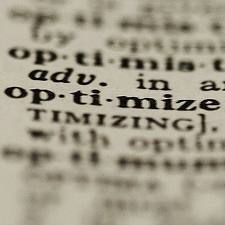Site title, description and keywords
Among the most important meta details for websites are the site title, description and keywords. We’ve already looked at how to easily edit each one in a previous post directly from the doomby site manager, from the Settings > Site info. menu.
It’s critical to ensure your site’s key meta tags contain information that's relevant to your content. When people use search engines, both user and search engine provider have a vested interest in the pertinence of results. If your site is listed for a given search term, you also need to ensure that a visitor referred to your site from a search engine result is there for the right reason.
Dealing with bounce
A visitor arriving on your website who’s looking for something they don’t find is a sure-fire way to ensure your site “bounces”. These kinds of very brief visits often occur when a visitor uses a referral source, like a search engine, to arrive on your site. They come with expectations of what they expect to find; if, for whatever reason, they don’t find what they’re looking for, they’ll “bounce” away.

There are a lot of simple things you can do to limit your website bounce rate. It’s important to pay particular attention to your site visitors’ expectations, and to reduce your site bounce, as bounce rate is one of the elements used to rank sites in search engine results.
Meeting site visitor expectations
Part of the process of ensuring visitors’ expectations are met when they arrive on your site is to provide relevant details to referral sources through meta information. And unless you’ve only just started out making a website, you’ll need to go beyond your site meta information to provide every page on your website with its own page-specific meta details.
Fortunately, providing per-page meta information is part of the website builder tools accessible from the doomby site manager.
Optimizing site page meta information

In addition to the page content management tools, the page editor has a section for adding meta information specific to that page. From the bottom of the page editor, open the SEO section to add a meta title and description for the page. If you use social networking tools like Facebook for improving your site linkage, you can also specify an image to automatically provide an illustration for your page.
Many of the elements used to create your website, such as images, can also be provided with alternative text, titles and descriptions. As images can’t be “read” by search engine algorithms, providing this information ensures your site is both accessible to everyone (such as people with visual impairments), and fully optimized for search engines. Try to get into the habit of including relevant titles, alt text and descriptions when adding images to pages, to your online photo album or to your site file storage space to improved site accessibility and search engine performance.
One of the ways of optimizing pages is to ensure their titles convey relevant information about their content. Titles are used to generate the URL for each page, as are the names of your store products and categories. Pay particular attention to titles to ensure the page URLs generated provide search engines with this additional source of information. If you need to, you can personalize the URLs of your online store category and product pages from the editor options section.


Site-wide meta information
Don’t forget to include keywords for appropriate site elements, such as your blog posts and online store. They’ll be useful both to ensure your website provides relevant information to search engines, and to enable your site visitors to quickly access what there’re looking for when they arrive: a handy anti-bounce tool.
Though there are a lot of things to think about when you begin to create a website for the first time, it’s important not to try and get everything done at once. Take your time, and break the work down into smaller, more easily-manageable chunks. Some of the SEO work for your website can be done in one go, but much of the bulk involves applying a few basic principles to the way you create a website, page-by-page. External link-building involves a little work, now and then, over the lifetime of your site. They key to a successful website is understanding that SEO is a race that never ends. It involves effort, in small doses, over a long period of time. Never allow yourself to be discouraged. Getting good search engine results takes time – just like life, it takes a long-term effort, and is forever in movement.
 We’ve recently taken a look at the basic principals of giving your website a good start in life. Much of the work of ensuring your site is visible on the web takes place on your pages, or through link building.
We’ve recently taken a look at the basic principals of giving your website a good start in life. Much of the work of ensuring your site is visible on the web takes place on your pages, or through link building.


